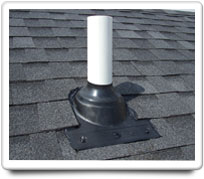Question Topic
Roof Installation

POLICY-Wizard™ calculates your ideal home care program to avoid problems with your Roof, but sometimes trouble can still occur. Here are answers to questions about roof installation.
QUESTION FROM bob woytko
What is the proper way to install a metal roof and flashing that abuts to brick and is over a bow or bay window?
ANSWER FROM POLICY-Wizard™
Bob:
Properly installing roof flashing is very important, as this an area that can easily lead to future problems with roof leaks.
Here is a link to a webpage that does a fair good job of describing how to install flashing, and includes a discussion of when the flashing need to abutt brick:
http://www.askthebuilder.com/B25_Metal_Roof_Flashings.shtml
Hope this is helpful.
Home-Wizard.com
FOLLOW-UP FROM bob woytko
Dear Home Wizard,
Thanks for your prompt reply.
First of all I have very little knowledge on roofing procedures. What I trying to ask you is for my 85 year old my mother-in-law. She bought a new house 2+ years ago and a bow window leak problem was noticed shortly after wards. The builder "fixed" it shortly after, but the problem was never fixed, and we are again trying to get it fixed by the builder--who is resisting.
The roof of the bay window is metal and the builder took the roof up to the brick only, and then the original fix entailed the installation of a plastic 4" cover over the brick and the metal and both of these edges were then caulked. This to me is not a true flashing and was nothing but a problem waiting to happen.
Shouldn't the metal roofing had continued beyond the roof and gone up the bricks (therefore a combined roof and flashing)and been secured with glue and screws and been caulked?
What would the normal commercial building practice for this type of roof be? And what are some ways to now fix the problem?
Thanks for your help
ANSWER FROM POLICY-Wizard™
Bob:
Its nice of you to be helping out your elderly mother-in-law.
I agree with you that from your description, I would have thought the contractor would have carried the metal flashing up the brick, and sealed the top edge.
With that said, its a bit hard to judge a particular installation situation, without physically seeing it. In other words, there may have been a logical reason why the contractor had to do it a certain way for her particular route.
Just a thought for you, we have quite a few sponsors of Home-Wizard that are certified home inspectors. Depending on where you live, we would be glad to provide you an introduction to a local home inspector. As you may know, home inspectors are trained experts in home construction practices, and in addition to reviewing her roof flashing, they could also do a safety inspection for her entire house while they are there. From my experience, I've found them to be very reasonably priced, and you get good value.
The other advantage of you contacting a local home inspector, is that depending on what they determine, you will have a recommendation to go back to your contractor with from someone who has physically seen their work.
You can also find local home inspectors at sites like: http://www.nachi.org/ or http://www.ashi.org/
Home this is helpful
Home-Wizard.com
QUESTION FROM Cindy
We have a room with a vaulted ceiling. Dark lines are starting to appear on the flat portion of the ceiling, next to the vaulted portion. The lines follow or outline the roof trusses. What can be causing this? If we paint over them, how do we know they will not come back?
ANSWER FROM POLICY-Wizard™
Dear Cindy:
It sounds like you have moisture leaking into your ceiling, and it is traveling along the ceiling joists, getting this area wet and likely attracting mold.
Because of the construction of vaulted ceilings, there are often number places where the roof lines intersect. And the places where the roof lines intersect they are covered with pieces of thin metal called "flashing". Over time (or if it was not installed properly), this flashing loosens up, and can allow water to come in through where the two sections of roofing meet. This could be where rain water is dripping into your ceiling, and then running down until it hits the ceiling joists.
The other possibility is that if there is not proper ventilation in your vaulted ceiling, and that when the warm moist air in your room meets the cold wood of your roof, that it causes moisture to condense out into your ceiling.
And yet another possibility is that, depending on the orientation of your roof lines (and the region of the country that you are in), that the moisture could be due to "ice damming", which is causing water to puddle on your roof, and then to seep into your ceiling under the shingles.
But to answer your question, yes, if these lines indeed are caused by mold due to moisture, then if you just paint over the dark lines they will keep coming back until you eliminate the source of the moisture.
You might want to start by talking with either a home inspector, or a qualified roofing contractor, who can inspect your particular situation and pinpoint the specific likely source of your moisture.
Hope this is helpful.
Home-Wizard.com

 Overview
Overview Routine Care
Routine Care Q & A
Q & A Articles
Articles